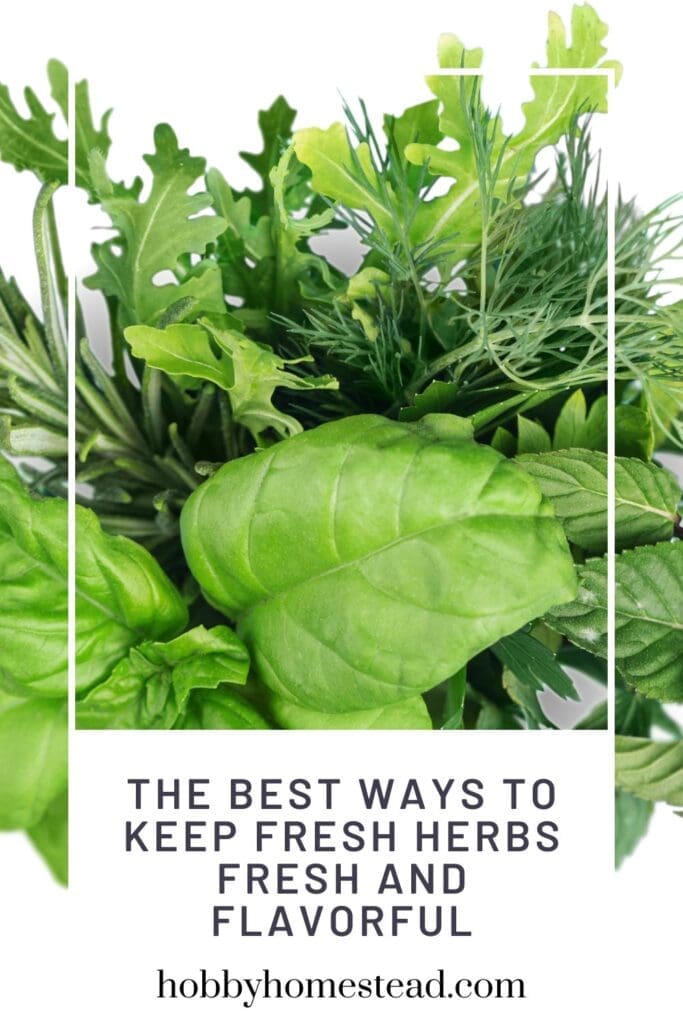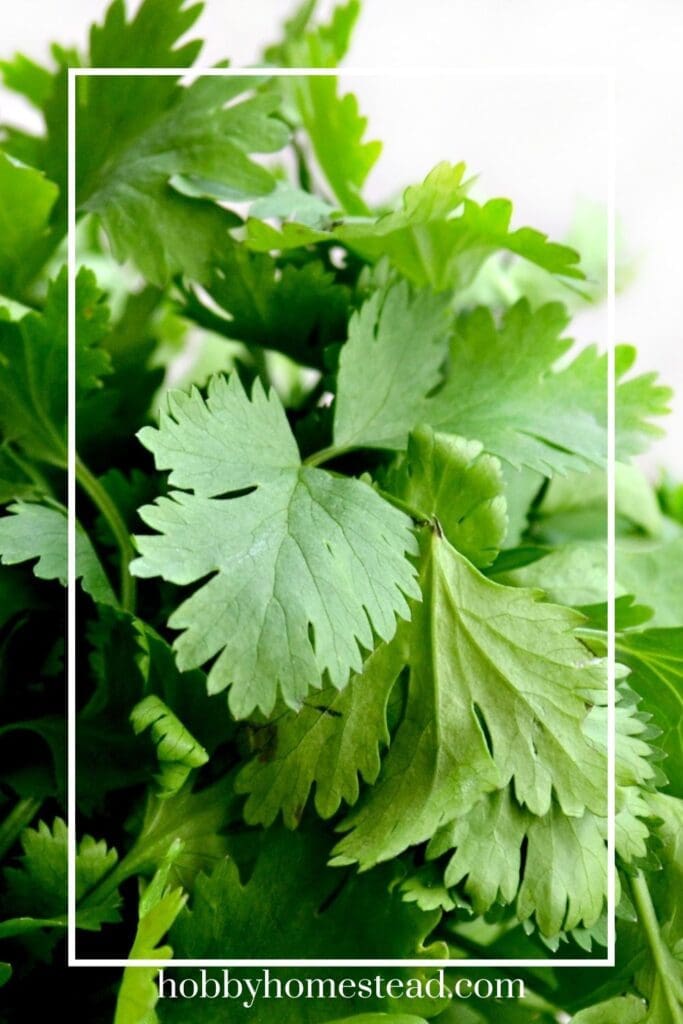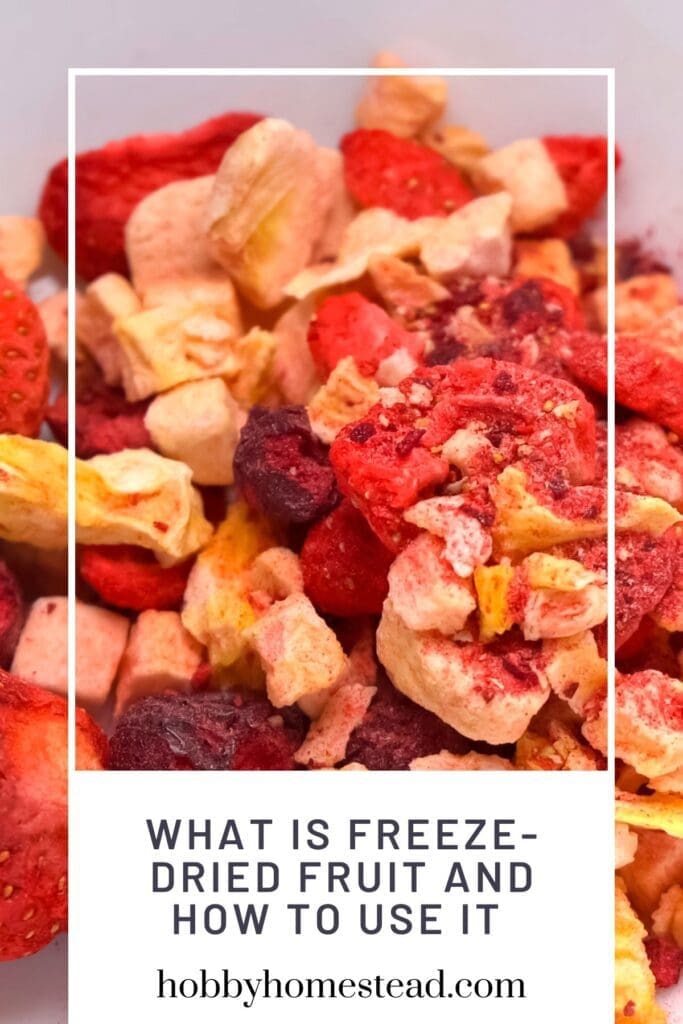The first thing to consider when storing fresh herbs is whether they’re tender herbs with soft stems, like parsley or basil, or hardy herbs with woody stems, like thyme or rosemary.
Tender herbs are delicate and require a little water to stay fresh. One effective method is to treat them like a bouquet of flowers: trim the ends of the stems with kitchen shears, place them in a glass jar with an inch of cold water, and cover the leaves loosely with plastic wrap.
Store this at room temperature or in the fridge, and you’ll keep the vibrant green leaves looking fresh for a couple of weeks.
For hardy herbs, wrapping them in a dry paper towel and placing them in an airtight container or resealable bag works best to avoid excess moisture.

General Tips
- For freezing any herb, chop them into small pieces and freeze in ice cube trays with water, olive oil, or broth. Once frozen, transfer to a freezer-safe bag for easy future use in soups, stews, and pasta sauces.
- Avoid over-packing herbs in bags or jars to prevent much moisture, which can lead to faster spoilage.
- For dried herbs, store in airtight containers away from heat and sunlight to maintain their flavor and health benefits.
Reducing Food Waste with Smart Storage
Proper storage methods not only preserve fresh flavor but also help reduce food waste. Herbs with too much moisture can spoil quickly, while dried herbs lose their vibrant flavor.
By using techniques like freezing smaller amounts in compartments of an ice cube tray or drying hardy herbs for later use, you can extend their shelf life.
Storing herbs in airtight containers or freezer bags protects them from freezer burn, ensuring they retain their bright color and taste for your favorite parsley-containing recipes. With these best tips, you’ll always have a supply of fresh herbs ready for your next culinary adventure.
Storing Other Herbs: Tailoring Methods to Their Needs
Different herbs have different storage needs, but with the right techniques, you can enjoy their fresh flavor for a longer period of time.
For soft herbs like basil, cilantro, and dill, the best method is to treat them as you would a delicate bouquet of flowers. Trim the ends of the stems, place them in a large mason jar or glass of fresh water, and loosely cover the leaves with plastic wrap or a freezer bag to maintain their vibrant green color.
Basil, however, thrives best at room temperature, so avoid storing it in the fridge, as cold temperatures can cause the leaves to darken and wilt.
Hardy herbs like rosemary, thyme, and sage are better suited to dry storage methods.
Start by wrapping them in a dry paper towel to absorb any excess moisture, then place them in an airtight container or a resealable plastic bag. Hardy herbs don’t require as much water as their tender counterparts, so keeping them dry is essential to extending their shelf life.
For long-term storage, drying or freezing hardier herbs is an excellent option. Simply spread them in a single layer on a baking sheet to air-dry or use a food processor to chop them into smaller pieces for freezing in ice cube trays with olive oil. These frozen cubes are a great way to add a burst of flavor to soups, stews, or roasted dishes.
Special Notes on Delicate Herbs
Some herbs, like chives and tarragon, require a little extra care because they’re particularly prone to wilting. For herbs like these, the damp paper towel method works wonders.
After rinsing the herbs under cold running water, gently pat them dry to remove excess water, wrap them in a slightly damp paper towel, and store them in a resealable plastic bag. This method not only preserves their bright color but also helps retain their delicate flavors for a couple of weeks.

How to Store the Most Popular Fresh Herbs
Here’s how to store the top 20 most popular herbs to keep them fresh and flavorful.
Tender Herbs (Soft Stems)
Basil.
Trim the ends of the stems and place them in a glass jar with an inch of water. Cover loosely with a plastic bag and store at room temperature. Basil doesn’t tolerate cold well, so avoid refrigeration.
Parsley (Flat-Leaf and Curly).
Treat like a bouquet of flowers. Trim stems, place in a jar with an inch of fresh water, and cover with plastic wrap or a resealable bag. Store in the fridge. Alternatively, wrap clean parsley in a damp paper towel and place it in a plastic bag.
Cilantro
Place stems in a glass of water and cover loosely with plastic wrap. Store in the fridge, changing the water every few days to maintain freshness.
Dill
Wrap in a damp paper towel and store in a resealable plastic bag in the fridge.
Chives
Wrap in a slightly damp paper towel and store in a resealable plastic bag. Alternatively, chop and freeze in ice cube trays with water or olive oil.
Tarragon
Wrap in a damp paper towel, place in a resealable bag, and store in the fridge.
Mint
Trim stems, place in a glass of water like a bouquet of flowers, and cover loosely with plastic wrap. Store in the fridge.
Chervil
Wrap in a damp paper towel, store in a resealable bag in the fridge, and use within a few days as it’s particularly delicate.
Oregano (Fresh)
Wrap in a damp paper towel and store in a plastic produce bag in the fridge.
Cress
Wrap in a damp paper towel and store in a resealable bag in the fridge.
Hardy Herbs (Woody Stems)
Rosemary
Wrap in a dry paper towel and store in an airtight container or resealable plastic bag in the fridge.
Thyme
Keep in a resealable bag or airtight container lined with a dry paper towel to absorb excess moisture.
Sage
Wrap in a dry paper towel and store in an airtight container in the fridge.
Bay Leaves (Fresh)
Store in an airtight container or resealable bag in the fridge or freeze for long-term use.
Lavender
Store fresh lavender in a resealable bag in the fridge or hang it to dry for future use.
Marjoram
Wrap in a dry paper towel and store in a resealable bag in the fridge.
Versatile Herbs (Can Be Used Fresh, Dried, or Frozen)
Lemongrass
Wrap stalks in damp paper towels and store in a plastic bag in the fridge. For long-term storage, freeze in small pieces in a freezer-safe bag.
Borage
Use immediately or store leaves in a damp paper towel in the fridge. Borage flowers are best used fresh.
Fennel Fronds
Wrap in a damp paper towel and store in a plastic bag in the fridge. Alternatively, freeze for future use.
Bay Laurel (Dried)
For long-term storage, keep dried leaves in an airtight container in a cool, dark place.

How to Store Parsley: A Versatile Herb
Parsley, whether it’s curly parsley or flat-leaf parsley, is a versatile herb that works in a variety of recipes. To store parsley, rinse it under cold running water to clean it and remove excess water with a salad spinner. Wrap the parsley leaves in a damp paper towel, place them in a plastic produce bag or freezer-safe bag, and seal it tightly.
Alternatively, you can trim the stems, place them in a glass of fresh water, and cover the leaves with a ziplock bag or plastic wrap for short-term storage. For long-term storage, frozen parsley is the best option.
Chop it into small pieces, freeze it in a single layer in ice cube trays with olive oil, and transfer the cubes to a freezer bag for future use. This ice cube tray method is especially handy for parsley pesto or pasta sauces.
By adjusting your storage methods to the specific type of herb, you can maximize freshness and reduce food waste. Whether you’re working with flat-leaf parsley, tender cilantro, or hardy rosemary, these tips will ensure your herbs are always ready for your favorite recipes.
If you’re experimenting with freezing or drying herbs, don’t forget to label and portion them properly for future use.


